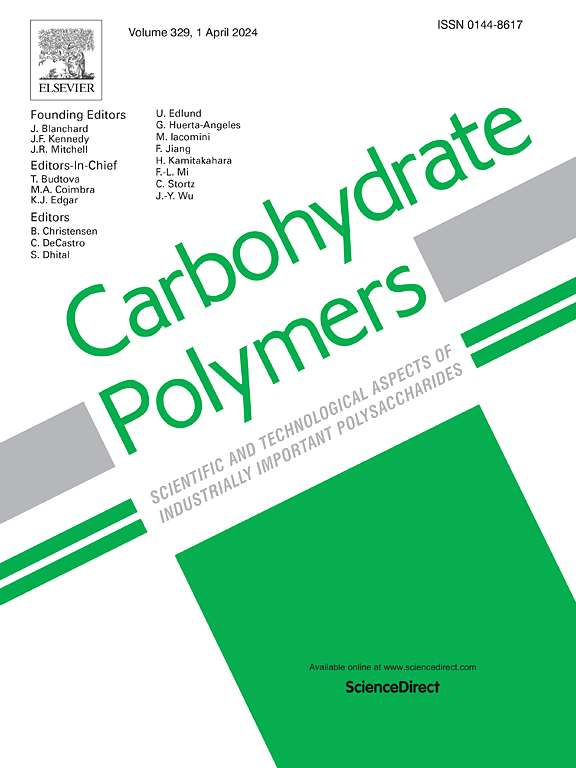Multifunctional dynamic chitosan-guar gum nanocomposite hydrogels in infection and diabetic wound healing
IF 10.7
1区 化学
Q1 CHEMISTRY, APPLIED
引用次数: 0
Abstract
Traditional wound care methods are less effective for infectious and diabetic wounds, highlighting an urgent need for effective strategies. The study aimed to design a self-healing hydrogel with antibacterial, antioxidant, and photothermal capabilities to treat infectious and diabetic wounds. Silver nanoparticles (AgNPs) were loaded into mesoporous polydopamine (MPDA) nanoparticles to form Ag@MPDA nanoparticles. Ag@MPDA was incorporated into the cationic guar gum-chitosan-boric acid (CCB) hydrogel to obtain the PA-CCB hydrogel. PA-CCB hydrogel exhibited excellent self-healing and adhesive properties, adapting well to the dynamic wound environment. PA-CCB hydrogel combined with photothermal therapy (PTT) could effectively eradicated E. coli (99.9 %) and S. aureus (99.7 %). The PA-CCB hydrogel reduced excessive reactive oxygen species and promoted the migration of fibroblasts in vitro. In the infected mouse wound models, the PA-CCB hydrogel effectively inhibited bacteria. After combining with PTT, the antibacterial ability of the PA-CCB hydrogel was further enhanced. In the diabetic mouse wound models, the PA-CCB hydrogel reduced the inflammatory level of wound tissue. In both models, after combining with PTT, the PA-CCB hydrogel exhibited further improvements in angiogenesis, collagen deposition, and re-epithelialization. By integrating multifunctional hydrogel with PTT, the PA-CCB hydrogel exhibited broad application potential for infectious and diabetic wounds.

求助全文
约1分钟内获得全文
求助全文
来源期刊

Carbohydrate Polymers
化学-高分子科学
CiteScore
22.40
自引率
8.00%
发文量
1286
审稿时长
47 days
期刊介绍:
Carbohydrate Polymers stands as a prominent journal in the glycoscience field, dedicated to exploring and harnessing the potential of polysaccharides with applications spanning bioenergy, bioplastics, biomaterials, biorefining, chemistry, drug delivery, food, health, nanotechnology, packaging, paper, pharmaceuticals, medicine, oil recovery, textiles, tissue engineering, wood, and various aspects of glycoscience.
The journal emphasizes the central role of well-characterized carbohydrate polymers, highlighting their significance as the primary focus rather than a peripheral topic. Each paper must prominently feature at least one named carbohydrate polymer, evident in both citation and title, with a commitment to innovative research that advances scientific knowledge.
文献相关原料
公司名称
产品信息
阿拉丁
boric acid
阿拉丁
chitosan (CS)
阿拉丁
Dopamine hydrochloride (DA)
 求助内容:
求助内容: 应助结果提醒方式:
应助结果提醒方式:


